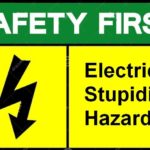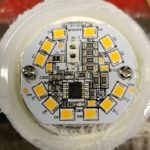The DoE-sponsored competition that gave rise to the first economical 60-W LED bulbs is operating again. The new goal: More innovative commercial lighting.
The Bright Tomorrow Lighting Prize (L-Prize) began in 2008 with the goal of accelerating  development of LED-based replacement lamps that met extraordinarily-stringent performance and life goals. Back then, there were such things as LED bulbs, but they were clunky, dim and relatively expensive devices that hadn’t a snowball’s chance of serving as main room lighting. The original L-Prize changed all that.
development of LED-based replacement lamps that met extraordinarily-stringent performance and life goals. Back then, there were such things as LED bulbs, but they were clunky, dim and relatively expensive devices that hadn’t a snowball’s chance of serving as main room lighting. The original L-Prize changed all that.
Philips Electronics was the first company to officially enter the competition for a 60-W replacement lamp in 2009. Philips won the A-lamp competition in August 2011 and received a $10M prize for its efforts. At the time you could buy the prize-winning Philips lamp for a mere $50. In 2015, the DOE said after 40,000 hours of testing the 31 lamps entered in the competition, lumen maintenance remained over 95%.

Today, of course, you can get a 60-W LED bulb for less than a buck if you shop around. Judging by the goals of the new L-Prize contest, it looks as though the DoE would like to see the same kind of price drop take place in the lighting of commercial buildings. The new version of the L-Prize doesn’t specify a product form factor or required performance levels. According to the DoE website, the new L-Prize encourages lighting innovators to design lighting systems with breakthrough energy efficiency, quality, functionality, and sustainability. A full realization of SSL technology potential envisions LED lighting products manufactured with significant domestic materials, while demonstrating exceptional energy efficiency, data connectivity, seamless lighting control, excellent visual quality, and design for recycling and remanufacturing.
If that description sounds a bit murky in terms of how to actually win the contest, that may be one reason the DOE will host a webinar on June 10 to answer questions about the program. At any rate, time is already flying: The concept phase is already open. As many as ten entrants will be eligible to win $20,000 with a winning proposal. The DoE will also host a comment period along with the chance to help shape the prototype and manufacturing stages.
Phase two, the prototype phase, will have a $2M prize pool that can be split among as a many as three finalists. The DoE Pacific Northwest National Laboratory (PNNL) will facilitate teaming entrants in partnerships for the manufacturing and installation phase.
An expert review panel will judge the ultimate success of the entrants in the third and final manufacturing and installation phase. As with the original L-Prize, the entrants will have to legally reside or be based in the U.S. And the winning products must be manufactured in a U.S. facility. The big winner is scheduled to be announced in Dec. 2024.
Despite the lofty language in the contest announcement, there are a number of specific rules already laid out in contest documentation. Points will be awarded across logistic and performance categories such as chromaticity, dimming range, glare control, light output, spectral power
data, color rendition, flicker, and numerous others that cover lifecycle cost and sustainability.







Leave a Reply